Tools - Fotogalerie - Sold antiquities
Archive of sold antiquities
All artefacts sold in our gallery are fully documented in our online archive and database. Being a specialist ancient art dealer, preserving also the more recent history of each and every piece sold in our shop is at our heart. That is particularly useful for artefacts that changed owners in the meantime. Information that may have been lost in the process can be easily restored from our archives. Please do not hesitate to contact us if you need further information about ancient items that have been sold in our gallery. We can help you with reconstructing the history of ownership for those items. All information about our customers will be kept confidential, of course.-
 Neolithic sickle from Northern Germany
Neolithic sickle from Northern GermanyCrescent-shaped blade made of beautiful grey flint. This tool represents an intermediate state within the radical transition from Neolithic to Bronze Age.
Price: on request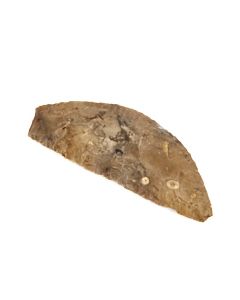 Neolithic sickle from Northern Germany
Neolithic sickle from Northern GermanySmall crescent-shaped blade made of beautiful grey flint. This tool represents an intermediate state within the radical transition from Neolithic to Bronze Age.
Price: on request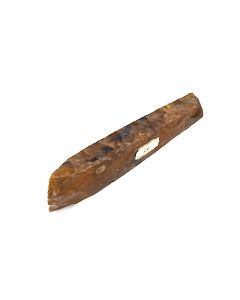 Neolithic axe head from Luetzow in Northern Germany
Neolithic axe head from Luetzow in Northern GermanyNice polished axe from brown flint. It was found more than 100 years ago near the town of Luetzow.
Price: on request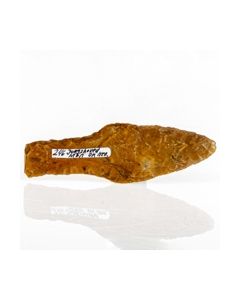 Scandinavian flint dagger
Scandinavian flint daggerNicely worked flint dagger from the transitional period between Late Neolithic and Early Bronze Age. Jungshoved on the Danish Island of Moen was the find spot.
Price: on request Palstave axehead with triangle decoration
Palstave axehead with triangle decorationExtremely well preserved piece from a Bronze Age hoard found in Manston, UK. 1400 to 1150 BC. This axe belongs to a very rare type.
Price: on request Palstave axehead with decoration
Palstave axehead with decorationExtremely well preserved piece from a Bronze Age hoard found in Manston, UK. 1400 to 1150 BC.
Price: on request Neolithic dagger
Neolithic daggerNicely worked flint dagger of type III. Sprove on the Danish Island of Moen was the find spot. 1700 to 1500 BC.
Price: on request Palstave axehead with triangle decoration
Palstave axehead with triangle decorationExtremely well preserved piece from a Bronze Age hoard found in Manston, UK. 1400 to 1150 BC. This axe belongs to a very rare type.
Price: on request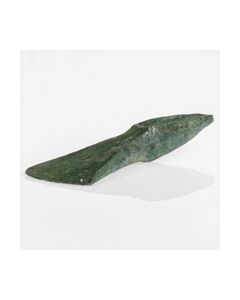 Palstave axehead with decoration
Palstave axehead with decorationExtremely well preserved piece from a Bronze Age hoard found in Manston, UK. 1400 to 1150 BC.
Price: on request Elegant Akkadian axehead
Elegant Akkadian axeheadThe zoomorphic axehead from Mesopotamia is an exceedingly rare variety of the Naram-Sin type. Akkadian Empire, around 2300 BC.
Price: on request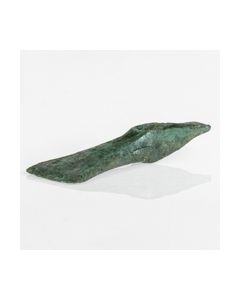 Palstave axehead with decoration
Palstave axehead with decorationExtremely well preserved piece from a Bronze Age hoard found in Manston, UK. 1400 to 1150 BC.
Price: on request Egyptian palette of the Middle Kingdom
Egyptian palette of the Middle KingdomWorkpiece of an artisan for grinding materials. A very similar grinding palette was found in Abydos. From the inventory of the Falmouth Museum.
Price: on request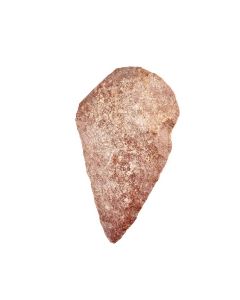 Paleolithic hand axe
Paleolithic hand axeThe universal tool of the older Stone age. It could be used as a borer or a cutter. Approx. 500,000 to 200,000 BC.
Price: on request Axe head from neolithic Northern Europe
Axe head from neolithic Northern EuropeThe object is a trapezoid thick-butted thin bladed axe head dating to the Passage Grave Period to Dagger Period. 3200 to 1950 BC.
Price: on request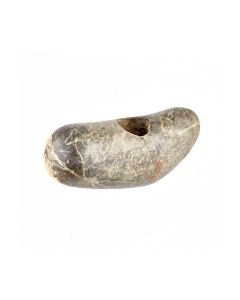 Finely polished hammer axe
Finely polished hammer axeThe compact axe head is made of beautiful and polished green-black stone with white veins. Late Neolithic to Copper Age.
Price: on request Polished stone age axe head
Polished stone age axe headThe small tool from the younger Stone Age has a nicely polished surface revealing the beautiful black stone it is made of. Approx. 4200 to 2400 BC.
Price: on request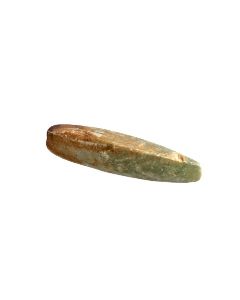 Neolithic chisel of green stone
Neolithic chisel of green stoneThe stone age tool of the younger Funnel beaker culture or Single Grave culture is exceptional because if its material. It is made of beautiful finely polished green stone.
Price: on request Neolithic flint sickle
Neolithic flint sickleHalfmoon shaped blade with fine edges. Nice and typical example for this neolithic type of tool.
Price: on request Bronze Age axe head
Bronze Age axe headVery well preserved axe head. Late Bronze Age, 10th to 9th cent. BC.
Price: on request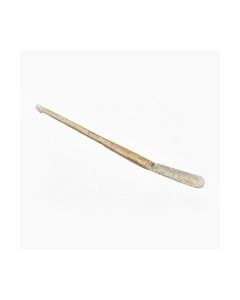 Roman strigilis with workshop mark
Roman strigilis with workshop markExcellently preserved, massive bronze, stable. Workshop mark "N" on the reverse.
Price: on request
 Roman bronze strainer from "Museum fuer Morgenlandfahrer"
Roman bronze strainer from "Museum fuer Morgenlandfahrer"Large piece in very good condition with nice patina. On display in "Ex Oriente Lux" exhibition, published in the corresponding catalogue.
Price: on request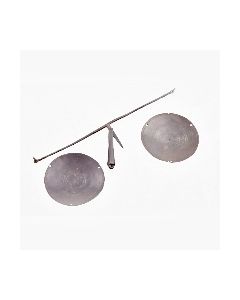 Roman scale balance with pans
Roman scale balance with pansWell preserved small bronze scale. Including two dished pans decorated with incised concentric rings.
Price: on request Bronze Age axe head
Bronze Age axe headVery well preserved axe head. Late Bronze Age, 10th to 9th cent. BC.
Price: on request Bronze Age axe head
Bronze Age axe headVery well preserved axe head. Late Bronze Age, 10th to 9th cent. BC.
Price: on request Hand axe from Galilee
Hand axe from GalileeBig paleolithic hand axe. The universal stone age tool could be use as a borer or cutting tool. Around 500,000 to 200,000 BC.
Price: on request Luristan ceremonial pick
Luristan ceremonial pickThe elaborate decorations are contrary to the actual use as a pick. The object is from the class of pseudo tools common in Iran at the end of the 2nd millenium BC. It probably served a ritualistic purpose.
Price: on request Roman specillum
Roman specillumThe so-called specillum is a surgical probe. It was standard issue for roman doctors. Similar probes are still in use today. 1st to 4th cent. AD.
Price: on request Roman surgical probe made of bronze
Roman surgical probe made of bronzeThe so-called specillum was standard issue for roman doctors. Similar probes are still in use today. Very fine craftsmanship of an ancient surgical instrument.
Price: on request Roman surgical probe made of silver
Roman surgical probe made of silverThe so-called specillum was standard issue for roman doctors. Similar probes are still in use today. Ancient surgical instruments made of silver are extremely rare.
Price: on request Römischer Bronzeschlüssel
Römischer BronzeschlüsselBart vollständig erhalten mit schöner Patina, ungewöhnliche Form mit sehr kurzem flachem Griff und daran ansetzendem, großem Ring.
Price: on request Beil / Hammer, Trichterbecherkultur
Beil / Hammer, TrichterbecherkulturUrsprüngliches Beil, das als Schlagstein wiederverwendet wurde. Neolithikum, 4200 bis 2800 v.Chr. Interessantes Zeugnis für den Wert von Feuerstein als Rohstoff. 100mm x 40mm x 40mm.
Price: on request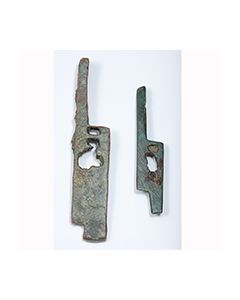 2 römische Schlossriegel
2 römische SchlossriegelAntike Bolzen für ein Schloss einer Tür oder Truhe. Bronze, 1. bis 4. Jh.n.Chr.
Price: on request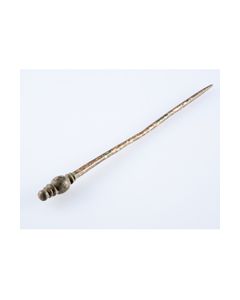 römischer Stilus aus Bronze
römischer Stilus aus BronzeSpitzer Stift aus Bronze zum Beschreiben von Wachstafeln. Mehr als 12cm lang, sehr gute Erhaltung. Aus alter deutscher Sammlung.
Price: on request römischer Luxusstilus aus Messing mit Beingriff
römischer Luxusstilus aus Messing mit BeingriffSpitzer Stift aus Messing zum Beschreiben von Wachstafeln. Beingriff mit Messingtülle, sehr gute Erhaltung.
Price: on request Kleiner Axtkopf
Kleiner AxtkopfNeolithisches kleines Beil. Sehr schöne polierte Oberfläche und feine Bearbeitung. 42mm x 33mm x 12mm. Fundort: Osteuropa.
Price: on request

